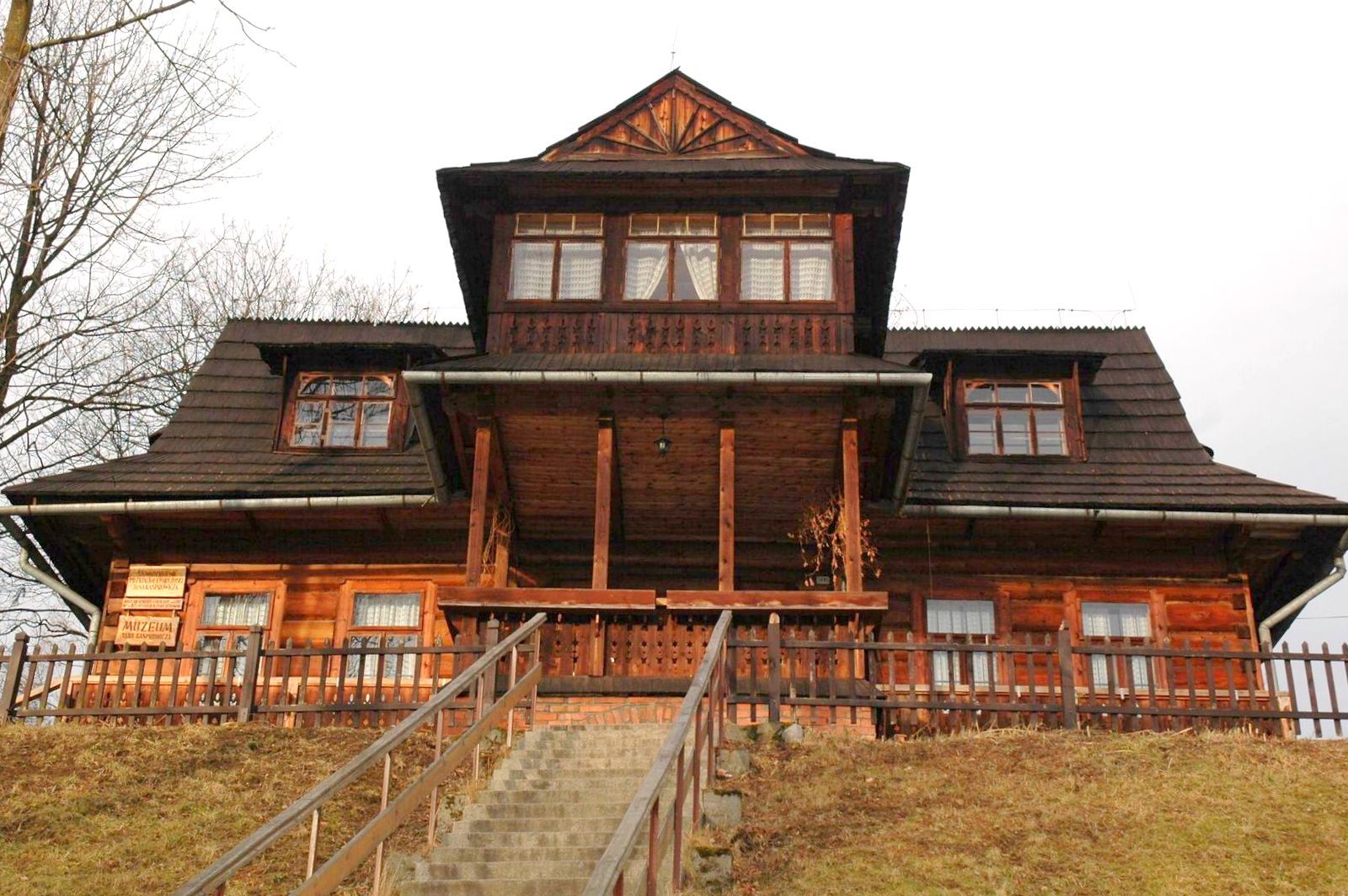Zakopane in early
20
th
century was a very popular place, attracting not only tourists and
patients, but also social and political activists, painters, poets,
scientists and physicians. Jan Kasprowicz visited Zakopane
frequently, and when in 1923 he bought villa on Harenda, he settled
here for good with his wife, Maria from the house of Bunin. The villa
was often visited by Kasprowicz's daughters from his former marriage
with Jadwiga Gąsowska – Janina and Anna.
Jan
Kasprowicz
is above all known as a poet from Young Poland period. Author of such
poems as "Krzak dzikiej róży" ("Wild rose bush")
and "Księga ubogich" ("The book of the poor"),
european literature translator, writer of dramas and theatrical
reviews. Not only a famous poet and renowned professor of University
of Lviv but also cheerful companion for evening at café, with many
friends like Stanisław Żeromski, Leopold Staff, Witkacy and others.
From the year
1950 Kasprowicz Villa in Harenda is his museum. The entrance leads to
veranda, decorated by Kasprowicz's favorite nasturtiums, where
magnificent view on mountains spreads wide. The house itself was
built in 1920 by Jan Fudala Kluś as a guesthouse.
Shortly afterwards, the house was sold
to english painter, Winifred Cooper, and then repurchased by
Kasprowicz. The basic design is modeled on typical highlander hut
with vestibule at entrance (here: dining room), "black chamber"
on the left (salon), "white chamber" (sleeping room) on
right side. Apart from those rooms, the villa houses an office,
kitchen and an attic. In Harenda villa both dining room, salon,
sleeping room and Władysław Jarocki's (Kasprowicz's son in law) art
gallery are available for touring.
Exhibition includes poet and his family
memorabilia with furniture, paintings, books and photography. The
interior is left in the same state as it was handed out by Maria
Kasprowicz, died in 1968. Pastel portraits made by Stanisław Ignacy
Witkiewicz in the salon are exeptionally interesting. One of them
shows Kasprowicz just before his death, and the other one is of his
wife in 1937. Also there are two sculptural representations of poet:
death mask took at the day of his passing by highlander artist
Stanisław Gąsienica Sobczak-Kochym and his head sculture made in
19
th century by Antoni Popiel.
As for dining room, the furninture is
designed mby Władysław Jarocki and made in Lviv. On the walls hang
the highlander glass paintings collected by Jan Kasprowicz and his
wife's portraits. Harenda Museum is being managed by Friends of Jan
Kasprowicz's Writing Association for years.
Beside villa, among the trees stand
granite mausoleum built from Maria Kasprowicz's initiative. The poet
was buried in Old Cementary at first, but when the mausoleum was
finished in 1933 by Karol Styjeński's plan, Kasprowicz was moved
there.
Władysław Jarocki Gallery
Rich legacy of Jarocki, gathered in Jan
Kasprowicz's home, consists not only of various ethnic polish
regional depictions, but also of native sceneries, marine included.
The collection is also enhanced by mediterrean landscapes and
polychrome and architectural projects. What's important, collected
works of Jarocki present a wide overview of his works, from well
received and awarded paintings, enough to say that he was appointed
as Academy of Fine Arts in Cracov professor in 1920, was a member of
Polish Artists Association "Sztuka", Vienna's Secession and
of Société National des Beaux-Arts in Paris, to his later works
with much lower art quality.
From many other places, it was decided
that the house of Jan Kasprowicz would be best suited to exhibit main
paintings or hucul and podhalan litographic works.
Not only because of museum's atmophere,
but also quality of such works. Genre scenes showing highlanders from
Zakopane and eastern Karpaty seems like a part of the same art trend
that rushed Paul Gauguin to Bretania, Martinique and Thaiti at the
end of 19
th century, to search for non-urbanized, primal
worlds where archetypical, untouched ideas were lasted.
Władysław
Jarocki (1879-1965) paintings exhibition was arranged by students of
Painting Department of Fine Arts Academy in Cracov. Thanks to support
of dr Adam Arganisty and his students we received a beautiful display
which extracted even more trasured from museum's collections.
Tickets
Museum, mausoleum and Gallery – guide tour
counted in ticket's prize
normal – 9,5 zł
concession –
7 zł
family (at least 3 people) – 7 zł per person
Opening hours
Jan Kasprowicz Museum
1
may – 30 october
tuesday – friday from 9.00 to
16.00
saturday – sunday from 10.00 to 15.30
1
november – 30 april
tuesday – sunday from 10.15 to
15.15
Władysław Jarocki Gallery
1 february –
30 december
tuesday – saturday from 10.15 to 15.15
Phone
reservations available for groups
Contact
Harenda
12 A street
34-500 Zakopane
phone
+ 48 18 20 684 26
sptjk@interia.pl
www.harenda.com.pl
 Dobra
Dobra





